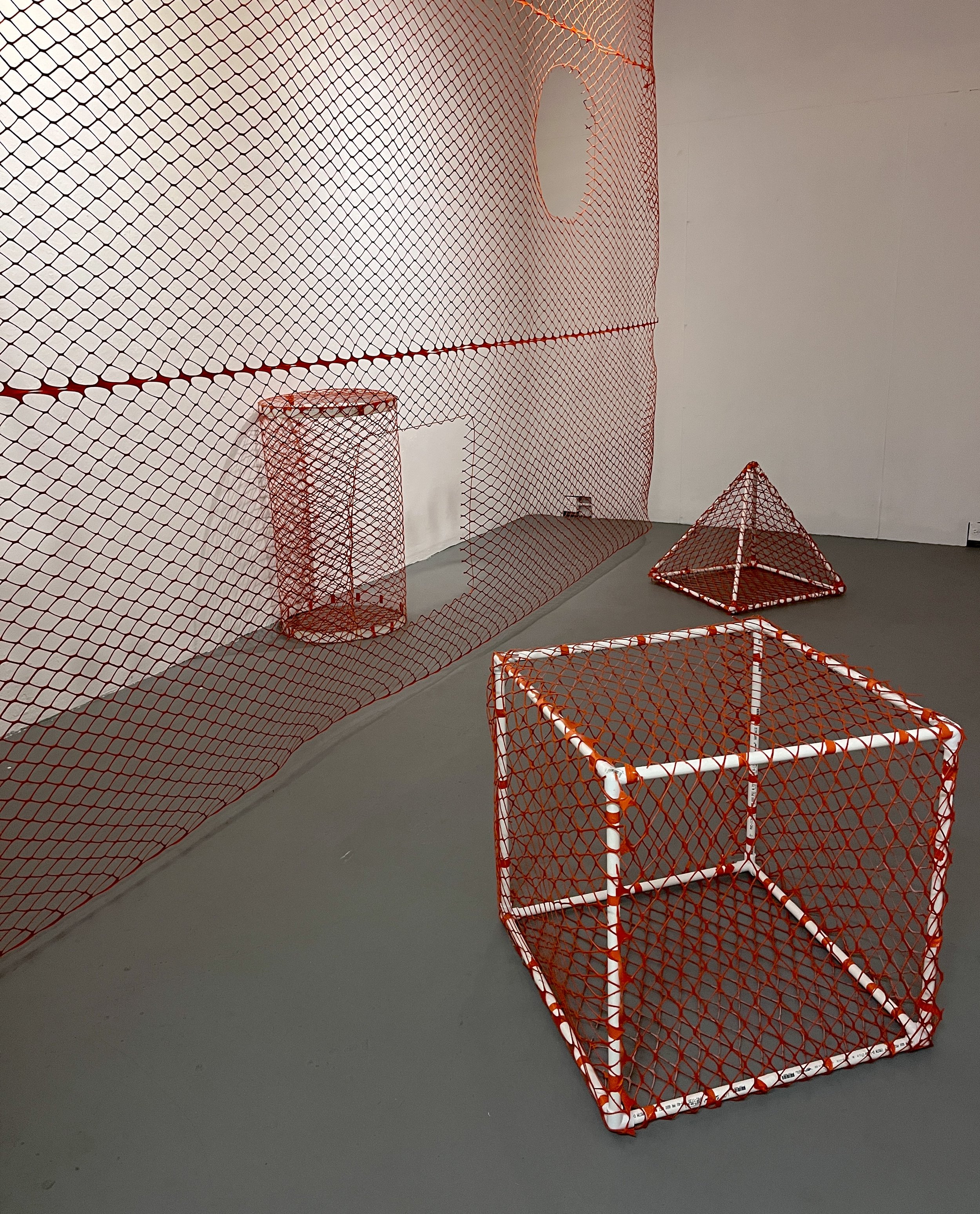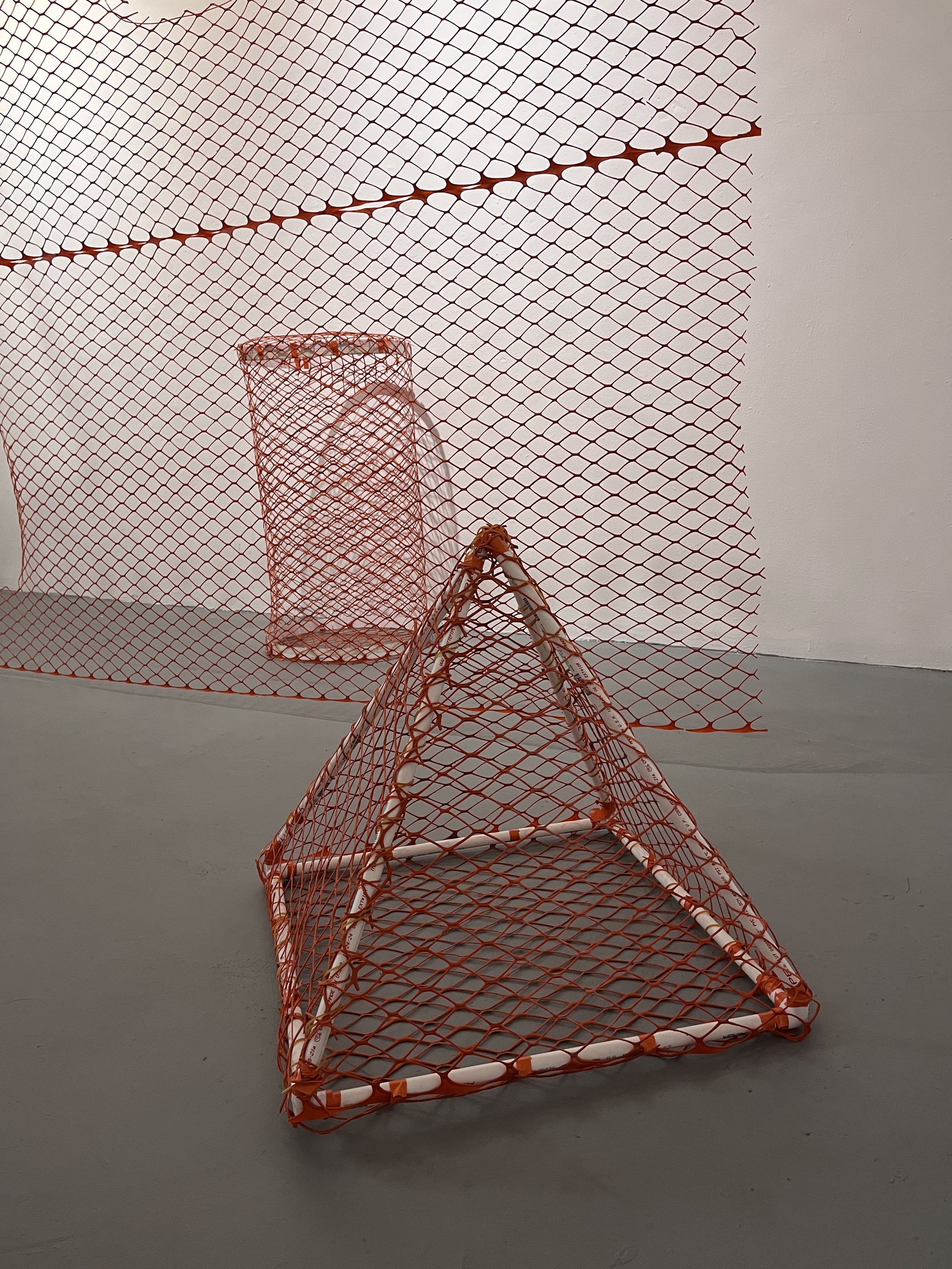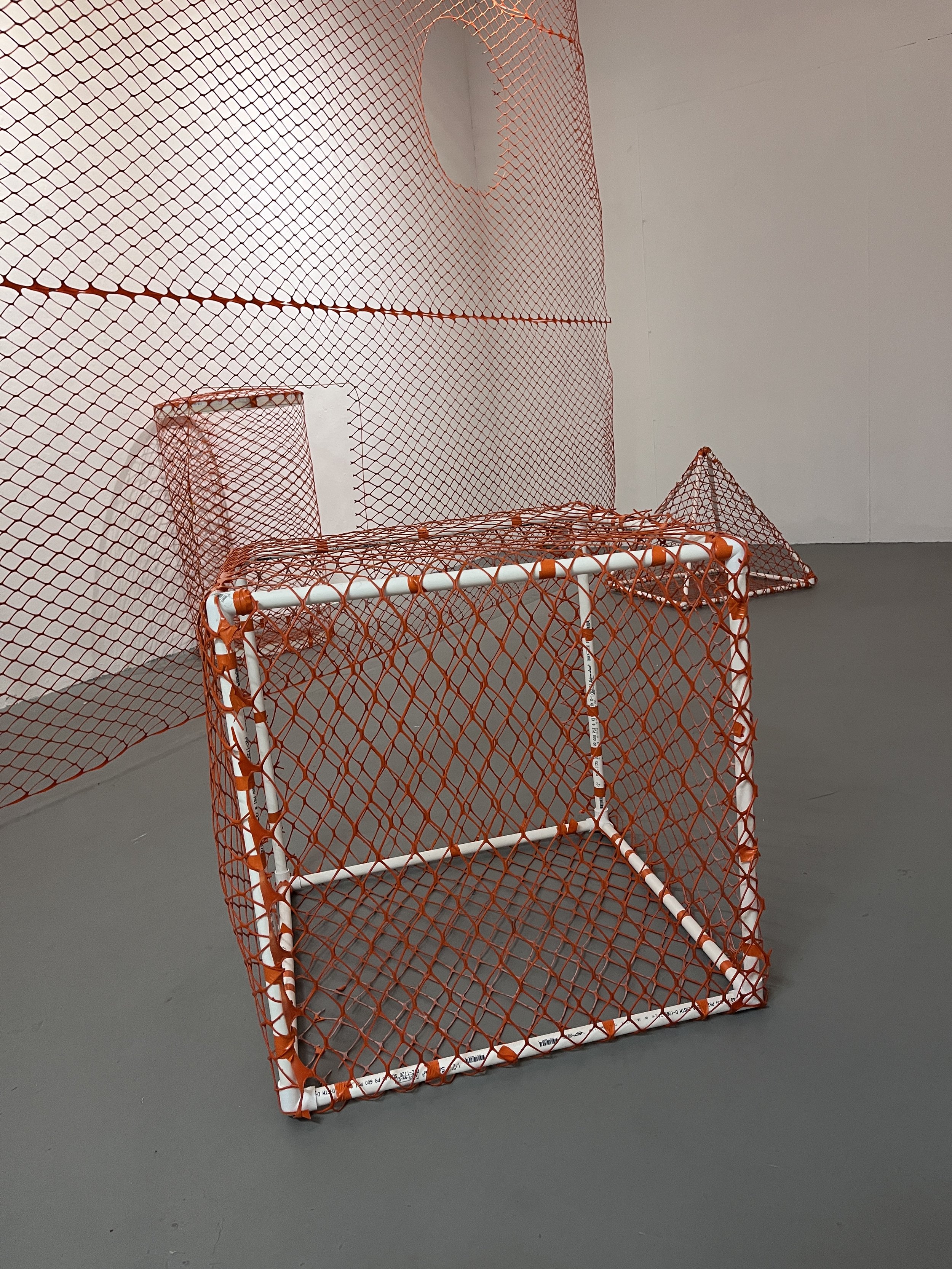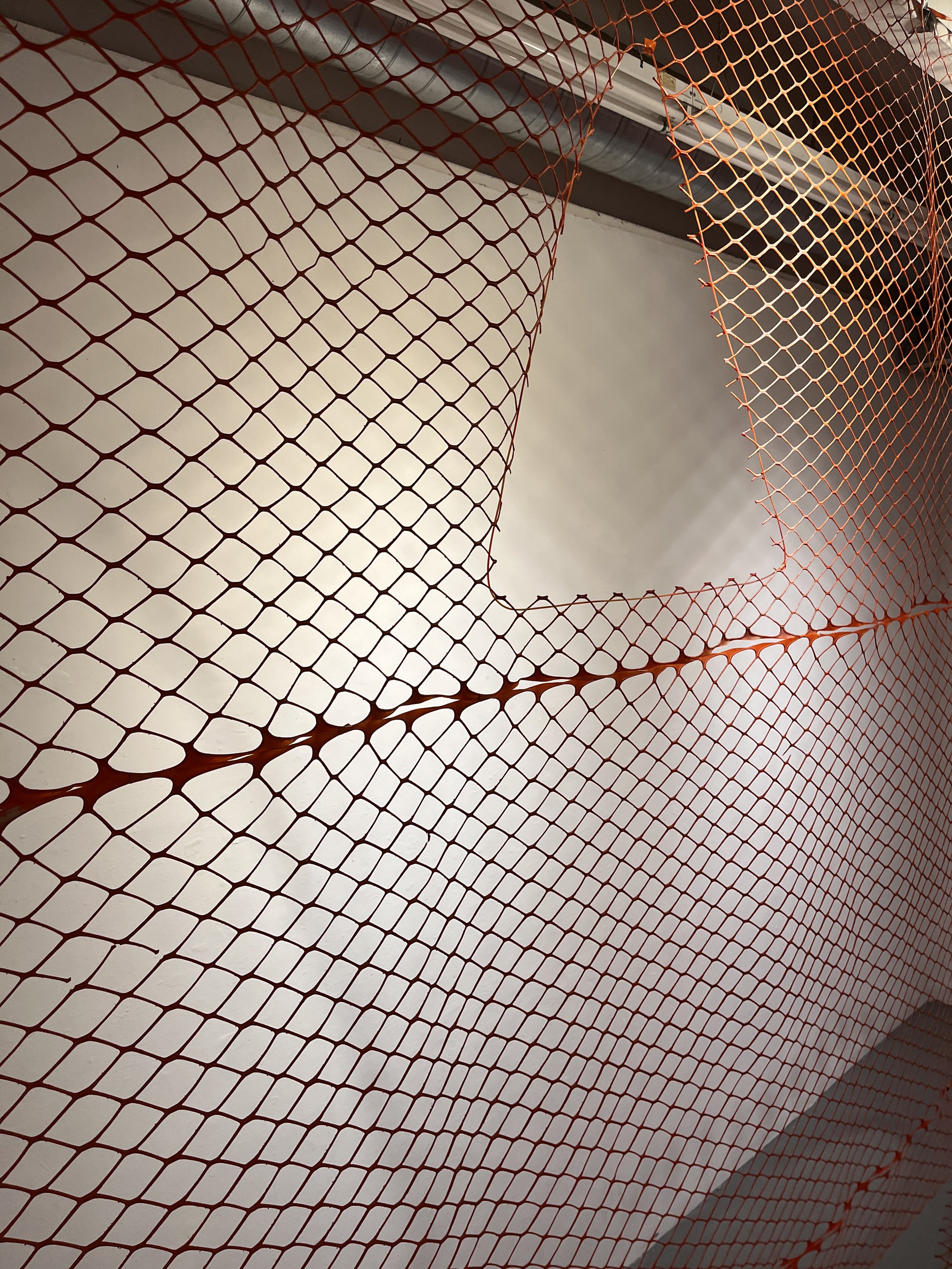Orange Fence
Orange Fence (2025) is an immersive installation that transforms everyday construction fencing into a layered meditation on borders, family, and migration. Composed primarily of bright orange construction fencing and playful, oversized geometric forms—blocks, triangles, and a cylinder—the work echoes the simplicity of a child’s game while invoking the complex narratives of separation and adaptation. The fence is suspended across the space with several openings that match the shape and size of the adult-size building blocks arranged throughout the two sides of the fencing, inviting viewers to engage directly with the installation. The shapes are constructed in a way that recalls childhood games but are scaled up to an adult size, emphasizing the emotional and psychological hardships that people face when experiencing immigration during adulthood or childhood. The orange fencing, typically associated with division and restriction, is repurposed here to create a boundary that can also be crossed, mirroring the generational complexities of human borders and personal memory. Drawing on the the history of her grandmother’s immigration from Mexico, Catalina relies on the oral histories passed down by her mother and relatives to piece together the events of her grandmother’s immigration from Mexico to the United States. The fence serves as both a physical and metaphorical marker of this divide—one that separated her grandmother from family left behind while shaping the cultural bonds carried forward.
Through its interactive design, Orange Fence challenges viewers to engage with the emotional and psychological dimensions of immigration. Visitors are encouraged to interact with the piece, choosing to navigate through its openings, much like traversing the porous borders of memory and identity. This work not only reimagines the familiar as a playful construct but also challenges us to reflect on the deeply personal, yet universally resonant, quest for home and belonging.






